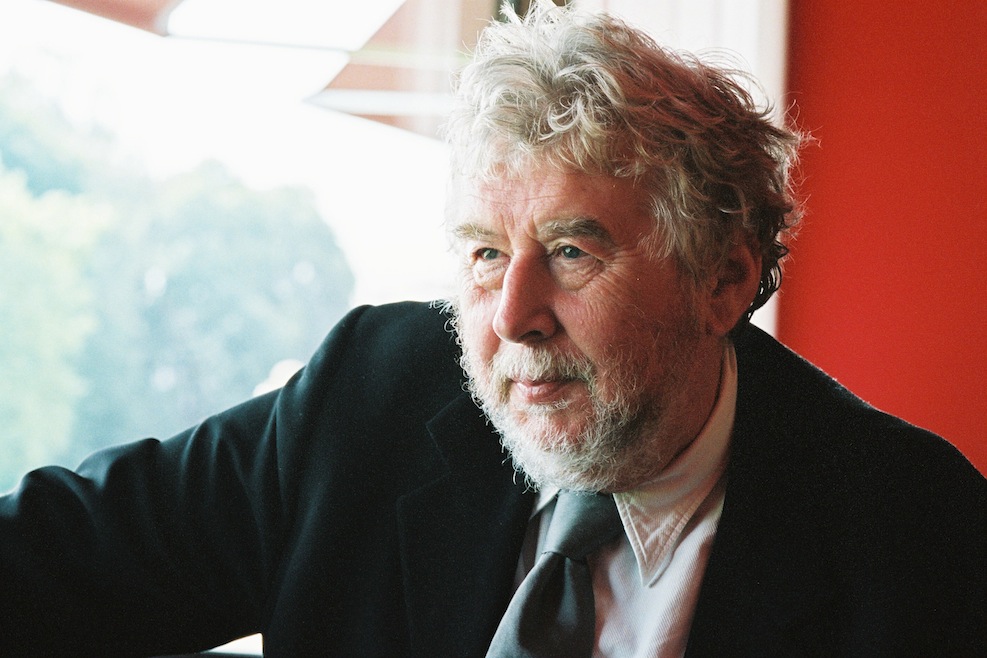At 80, Birtwistle’s best music still conjures time out of mind

The New York New Music Ensemble performed an evening of Harrison Birtwistle’s music Monday night at the DiMenna Center.
In the English National Opera program for his incredible opera, The Mask or Orpheus, composer Harrison Birtwistle is quoted saying: “I’m concerned with … going over and over the same event from different angles, so that a multidimensional musical object is created which contains a number of … perspectives. I don’t create linear music … I move in concentric circles. The events I create move as the planets move in the solar system.”
Provocative words and a powerful idea. As the New York New Music Ensemble showed in their Monday night concert celebrating the composer’s 80th birthday—held at the DiMenna Center for Classical Music—when Birtwistle’s composing fulfills that ideal, the results are unique and powerful. When the idea and the articulation are at odds, he’s a very different artist, a less than ordinary one.
The concert mixed new and recent works with two poor early pieces that came off as jarring, as they were sequenced to open and close the program. In 1969, Birtwistle arranged two short bits of Renaissance polyphony, Ut Heremita Solus, by Johannes Ockeghem and Machaut’s Hoquetus David. The chamber instrumentation is for flute, clarinet, strings, piano and tubular bells, and glockenspiel.
The results are as odd as they would appear to sound, nothing like the comparable conception of Webern’s orchestration of Bach. In fact, they are just plain bad. The vocal lines are stiffly segregated through the instruments, and the glockenspiel, with its “look at me!” quality, is a terrible choice, overemphatic in everything it touches. The ensemble played the music with careful, anxious precision, as if they were tiptoeing through a minefield, and the violin and cello playing in the Machaut setting sounded just a step past sight-reading.
The most recent piece, Fantasia upon all the notes, from 2011 (heard in its U.S. premiere), was more skillfully crafted but at odds with the composer’s own, important ideas about time. This piece is resolutely linear—the central instrument in the ensemble is the harp (finely played by Bridget Kibbey), and it lays down a continual accompaniment to the rest of the group that, despite the modern tonality, serves accepted traditions of counterpoint and harmonic structure. There’s an invigorating sense of emotional agitation in the other instruments, especially the lead voices of flute and clarinet (the excellent musicians Sooyun Kim and Benjamin Fingland), and the accompanying string quartet, but the lines and sections fit together like a mathematical formula.
Birtwistle, at his best, writes music that moves fluidly, and his personal view of time makes his best music extraordinary. The other three works on the program—Trio, 2010, for violin, cello and piano; Crescent Moon over the Irrational, also 2010 and also a U.S. premiere, for the same ensemble as Fantasia; and The Axe Manual, a work from 2000 written, punningly, for pianist Emanuel Ax and percussionist Evelyn Glennie—were dazzling, evocative explorations of what music can produce when it is set spiraling around itself and about time.
This is a difficult proposition in Western classical music, built on the premise that music moves through time to resolution. Birtwistle works with short phrases and patterns that do repeat, but the repetitions come after a complex sequence of events, and there is no explicit sense of progress leading from one to the other. Sometimes the phrases sound the same as before, sometimes they sound different.
Hearing these great compositions is like being lost in the woods, searching for a path, and finding oneself going in circles. But time has elapsed, so the landscape changes through each iteration. And since we listen willingly, this is the sensation of being lost in curiosity and beauty. The experience is easily as mesmerizing as hearing the great works of Feldman or Cage, but where those artists create the feeling of staying in the same place in time, Birtwistle at his best creates the experience of being entirely outside of time.
Crescent Moon is an especially beautiful score, colorful and rich in emotional and intellectual content. The playing was superior, with clear, unobtrusive direction from conductor Oliver Hagen—everyone seemed prepared technically and mentally. Trio is dominated for most of its duration by the piano, especially with Stephen Gosling’s typically powerful playing. The strings linger around the edges, before they (violinist Linda Quan and cellist Chris Finckel), spin up out of the textures and create their own time-circles.
Gosling and percussionist Daniel Druckman played The Axe Manual. Time in this piece forms an arch, moving from quiet to loud, from sparse to dense activity—the percussionist himself moves from the stage-left corner of his station, with bongos and marimba, to the stage-right metallaphone, then reverses—then back a similar slope. But is the direction and shape the same? That puzzle is at the core of the music.
Each musician spins and circles in his own way, moving towards and away from each other through harmony and synchronization. The piece is tremendously involving, full of beautiful sounds and the powerful feeling that everything happens between ticks on the clock. Gosling and Druckman were completely committed, assured, and sympathetic to the composer’s ideas. The music seemed like it would never end in the best way.
The New York New Music Ensemble plays new works by young composers at Roulette on May 19 nynme.org


